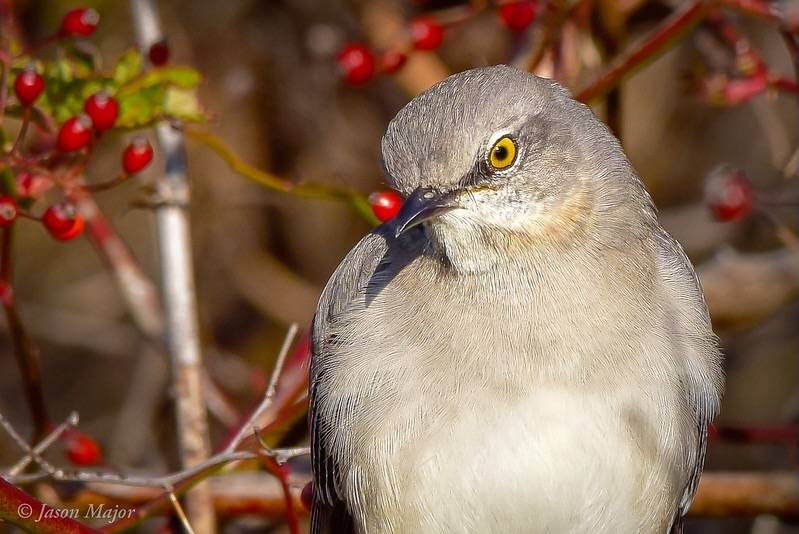Northern Mockingbird
The Northern Mockingbird is present throughout the year at Salter Grove. It is heard and seen most often in the southern portion of the park on Audubon Hill, where a large mown field is bordered by dense shrubbery. Solitary individuals forage on the lawn or sing in exposed perches. Should a second bird appear, aerial chases follow with both birds flicking their long tails while flashing their white wing patches.
The Northern Mockingbird may not impress with its subdued gray plumage but it has an astounding ability to mimic other bird species, cats, crickets, dogs, frogs, even a squeaky wheelbarrow! Its scientific name means many-tongued mimic. One bird was reported to have changed tunes 87 times in 7 minutes and 58 of the imitations were recognizable bird songs. Admirers would even contend that it improves upon what it imitates.
At Salter Grove, should you hear the songs and calls of the American Robin, Carolina Wren, House finch, House Sparrow, Northern Cardinal, Northern Flicker, and Tufted Titmouse, etc., in any combination, all strung together in quick succession, and coming from a single direction--it would likely be a Northern Mockingbird.
Beyond the sounds it mimics, the Northern Mockingbird actually has a repertoire of its own songs. Birds studied in Texas and Florida were documented to have from 14 to over 200 songs per bird and the repertoire apparently grows with age. Two other species in its family occur at Salter Grove, the Gray Catbird which breeds in the park but winters elsewhere, and the Brown Thrasher which passes through during migration. Although mimicry runs in the family, neither can equal the Mocker. However, the Brown Thrashers have been recorded to have a repertoire of over 1,000 songs.
During the nineteenth century, Mockers were on a steep decline along the east coast because so many were collected for the cage-bird trade. Gifted songsters were sold for $50 in 1828 which in 2023 would be the equivalent of over $1,600! Fortunately, legislation ended this practice and numbers have increased ever since.
Previously considered a bird of the south, the Northern Mockingbird now occurs from the Canadian Maritime provinces south to Florida. It avoids dense woods but instead favors suburban and urban areas with shrubbery such as parks and gardens. Lucky (or pity?) the suburban homeowner who gets serenaded by an unmated male through the moonlit night.
It is seasonally omnivorous, eating mostly insects during the breeding season and then switching to fruits during the colder months. It feeds on a wide variety of native plants such as American holly, American pokeweed, blackberries, eastern red cedar, elderberry, mulberry, poison ivy, small bayberry, Smilax, sumac, Virginia creeper and many others. Rambler rose is a particular favorite for both food and nest location, and the expansion of the Northern Mockingbird's range has been linked to the widespread establishment of this plant introduced from Asia.
The Northern Mockingbird has cultural presence. It is the state bird of five states: Arkansas, Florida, Mississippi, Tennessee, and Texas. It has been featured in the titles of books (To Kill a Mockingbird), songs (Listen to the Mockingbird, Mockin' Bird Hill, and even personified in television programs (Mister Rogers' Neighborhood) and movies (The Hunger Games).
For more information:
https://www.allaboutbirds.org/guide/Northern_MockInsgbird
https://www.audubon.org/field-guide/bird/northern-mockingbird
https://en.wikipedia.org/wiki/Northern_mockingbird
https://animaldiversity.org/accounts/Mimus_polyglottos/
https://www.birdsbybent.com///////ch31-40/mockingb.html

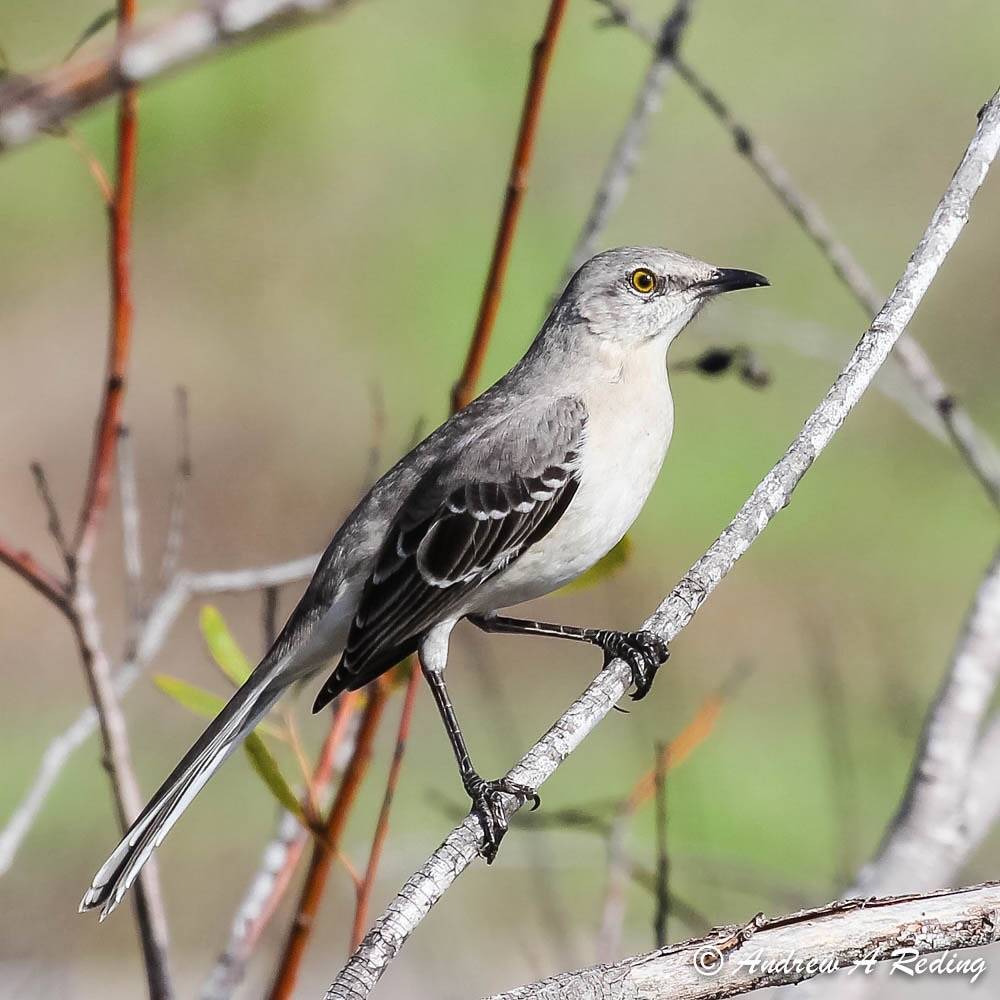
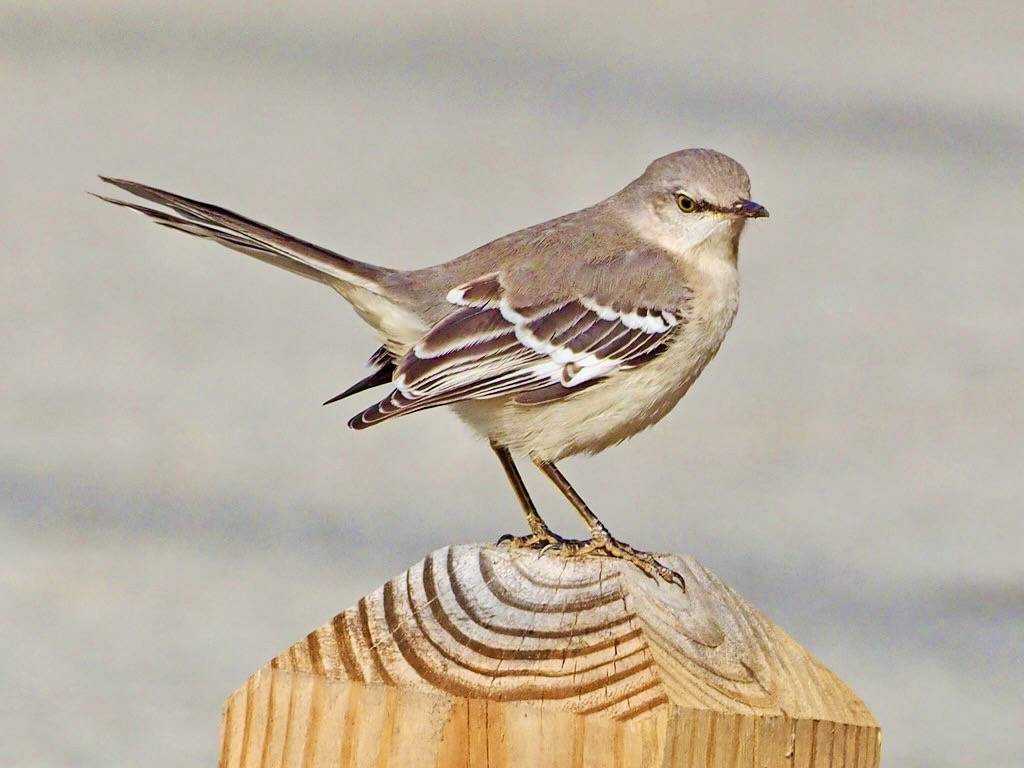
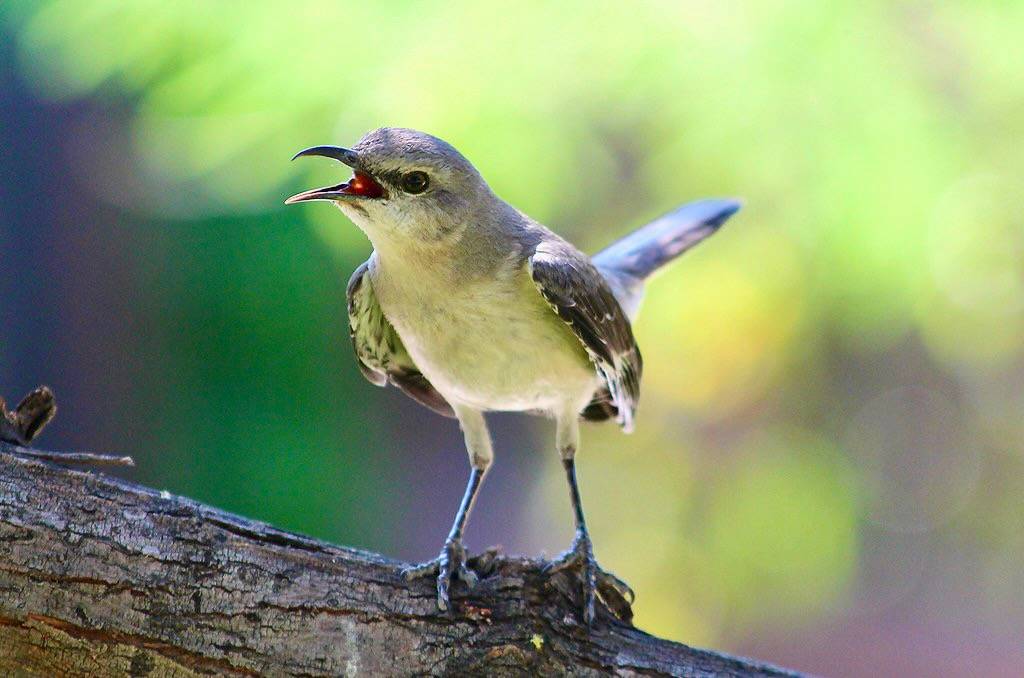

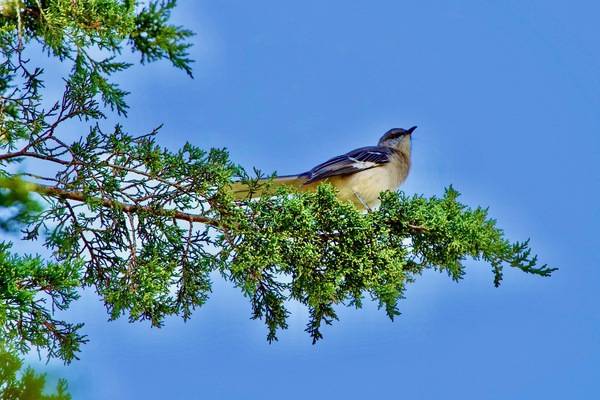
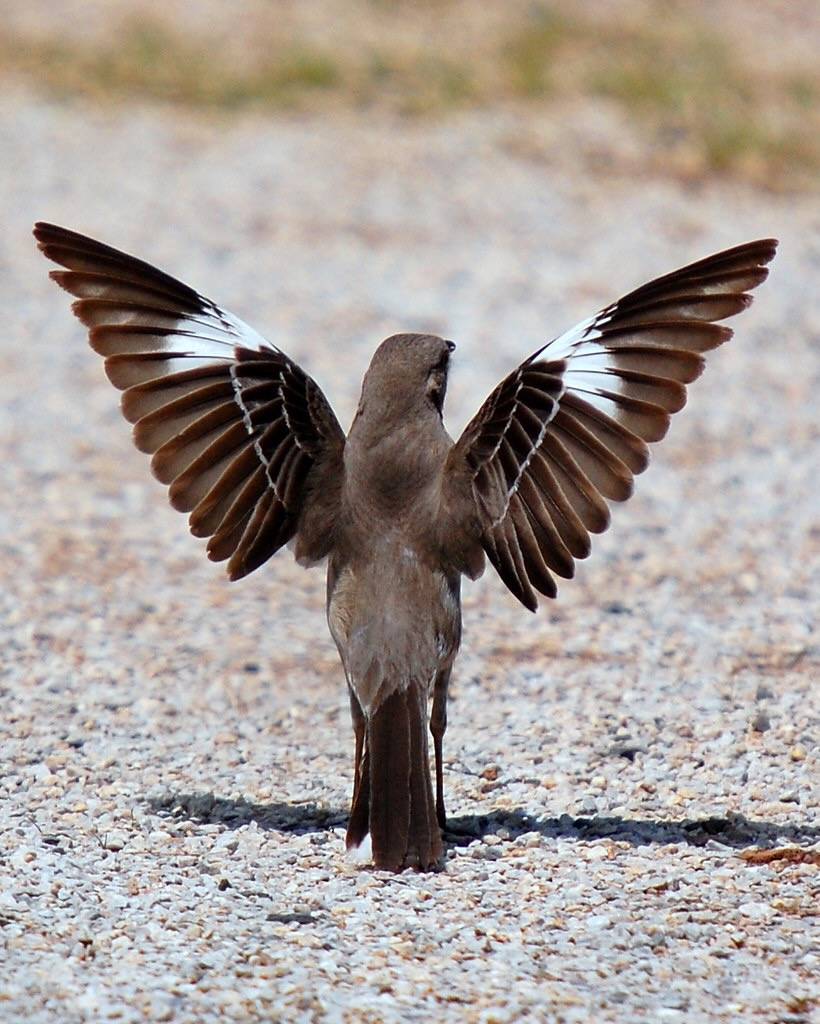
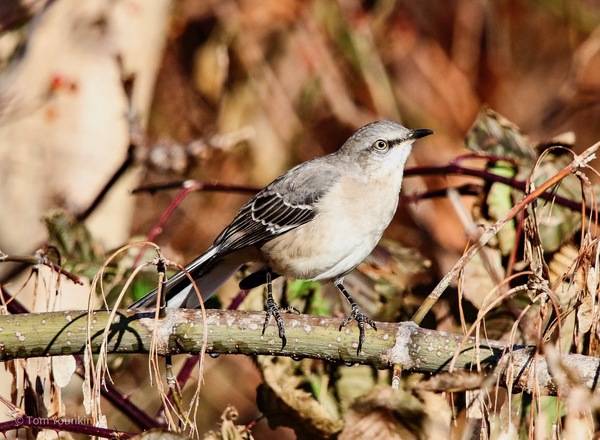


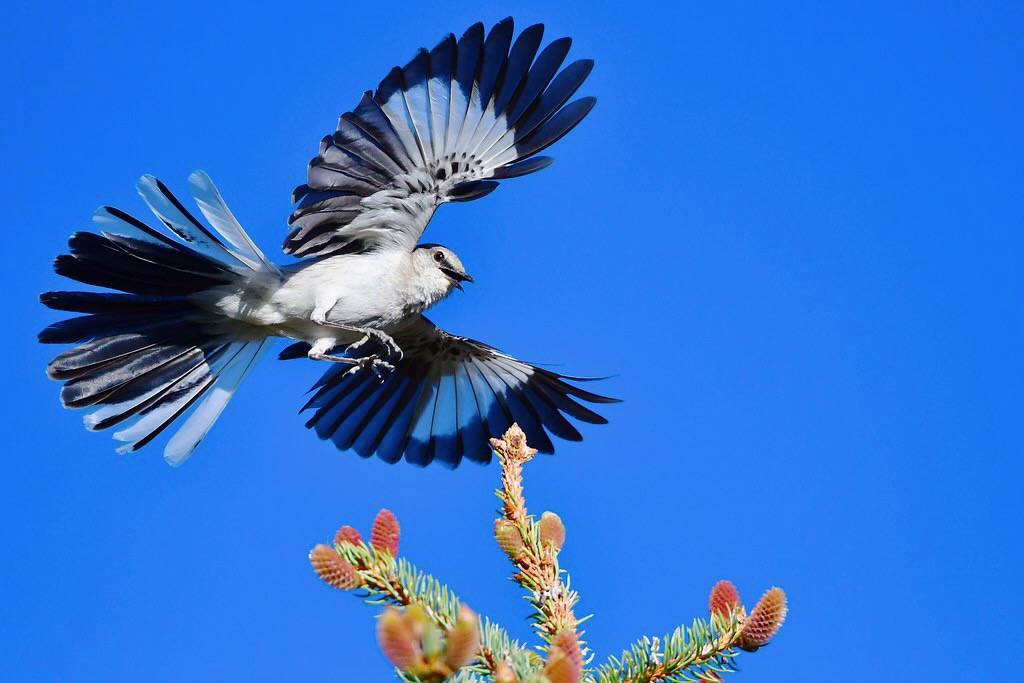

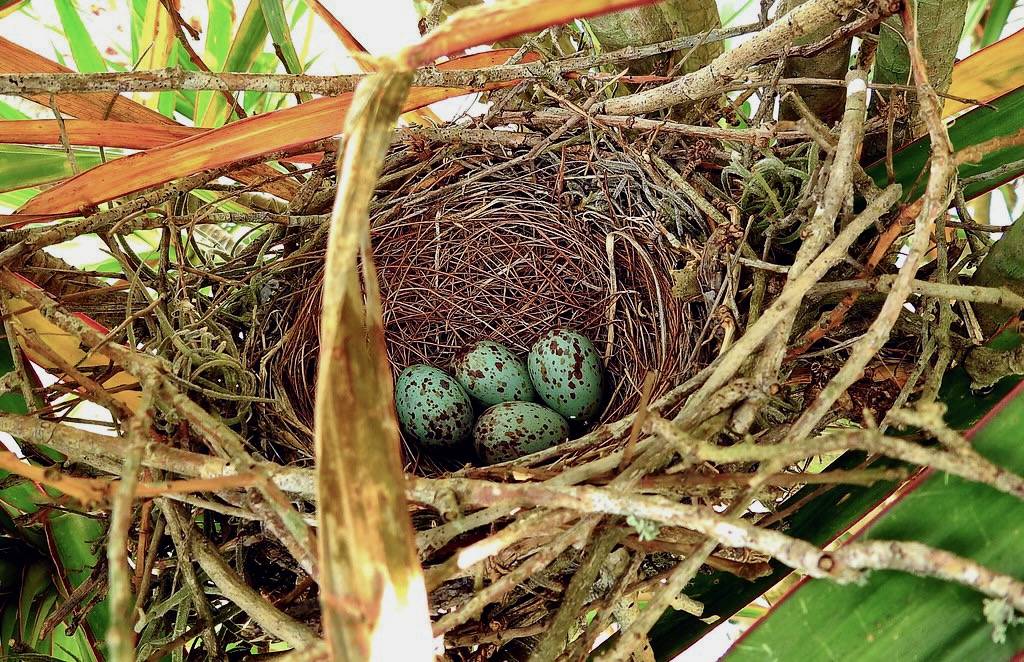



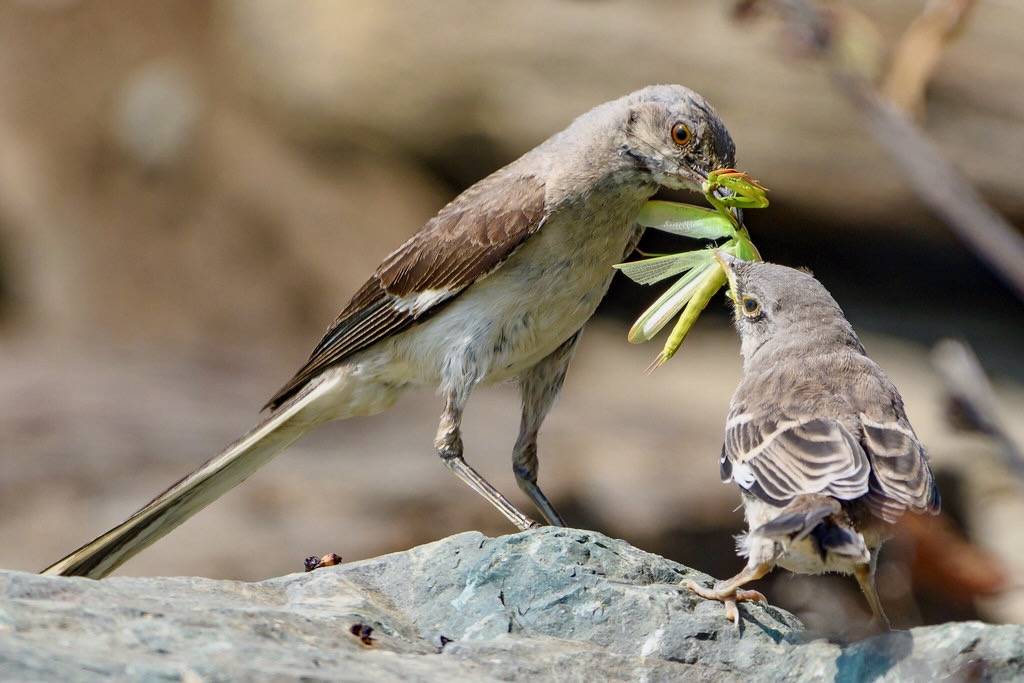
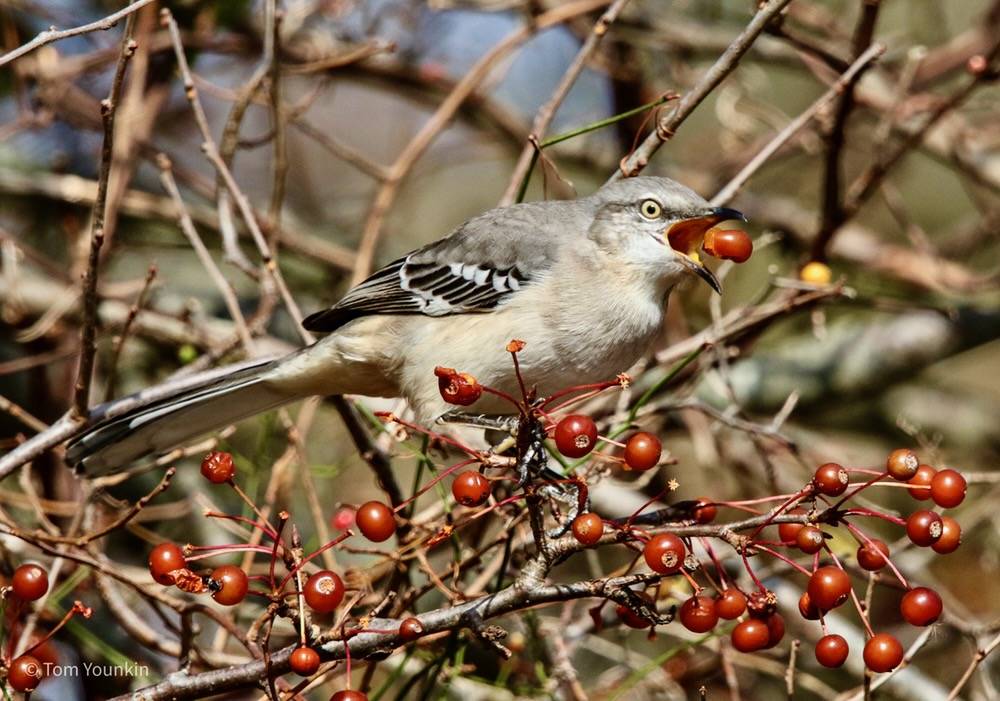
.jpeg?w=350?blur=10)
